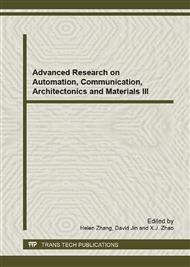[1]
Adam J. Blanch, Claire E. Lenehan, Jamie S. Quinton. Parametric analysis of sonication and centrifugation variables for dispersion of single walled carbon nanotubes in aqueous solutions of sodium dodecyl benzene sulfonate. Carbon 2011(49): 5213-5228.
DOI: 10.1016/j.carbon.2011.07.039
Google Scholar
[2]
Thess A. Lee R, Nikolaev P, Dai H, Petit P, Robert J, et al. Crystalline ropes of metallic carbon nanotubes. Science 1996; 273(5274): 483–7.
DOI: 10.1126/science.273.5274.483
Google Scholar
[3]
Bergin SD, Sun Z, Streich P, Hamilton J, Coleman JN. New solvents for nanotubes: approaching the dispersibility of surfactants. J Phys Chem C 2010; 114(1): 231–7.
DOI: 10.1021/jp908923m
Google Scholar
[4]
Hersam MC. Progress towards monodisperse single-walled carbon nanotubes. Nat Nanotechnol 2008; 3(7): 387–94.
Google Scholar
[5]
Jiang LQ, Gao L, Sun J. Production of aqueous colloidal dispersions of carbon nanotubes. J Colloid Interface Sci 2003; 260: 89–94.
DOI: 10.1016/s0021-9797(02)00176-5
Google Scholar
[6]
Guan LH, Shi ZJ, Gu ZN. Exfoliation of single-walled carbon nano- tube bundles under electron beam irradiation. Carbon 2005, 43: 1101– 1103.
DOI: 10.1016/j.carbon.2004.11.045
Google Scholar
[7]
Sabba Y, Thomas EL. High-concentration dispersion of single-wall carbon nano- tubes. Macromolecules 2004; 37: 4815–20.
DOI: 10.1021/ma049706u
Google Scholar
[8]
Xiao KQ, Zhang LC. Effective separation and alignment of longentangled carbon nanotubes in epoxy. J Mater Sci 2005; 40: 6513–6.
Google Scholar
[9]
Safadi B, Andrews R, Grulke EA. Multiwalled carbon nanotube polymer composites: synthesis and characterization of thin films. J Appl Polym Sci 2002; 84: 2660–9.
DOI: 10.1002/app.10436
Google Scholar
[10]
Islam MF, Rojas E, Bergey DM, Johnson AT, Yodh AG. High weight fraction surfa-ctant solubilization of single-wall carbon nanotubes in water. Nano Lett 2003; 3: 269–73.
DOI: 10.1021/nl025924u
Google Scholar
[11]
Decker JE, Walker ARH, Bosnick K, Clifford CA, Dai L, Fagan J, et al. Sample preparation protocols for realization of reproducible characterization of single- wall carbon nanotubes.
DOI: 10.1088/0026-1394/46/6/011
Google Scholar
[12]
Jiang LQ, Gao L, Sun J. Production of aqueous colloidal dispersions of carbon nanotubes. J Colloid Interface Sci 2003; 260: 89–94.
DOI: 10.1016/s0021-9797(02)00176-5
Google Scholar
[13]
Grossiord N, Regev O, Loos J, Meuldijk J, Koning CE. Timedependent study of the exfoliation process of carbon nanotubes in aqueous dispersions by using UV– visible spectroscopy. Anal Chem 2005; 77: 5135–9.
DOI: 10.1021/ac050358j
Google Scholar
[14]
Wang Y, Wu J, Wei F. A treatment method to give separated multi-walled carbon nanotubes with high purity, high crystallization and a large aspect ratio. Carbon 2003; 41: 2939–48.
DOI: 10.1016/s0008-6223(03)00390-7
Google Scholar


